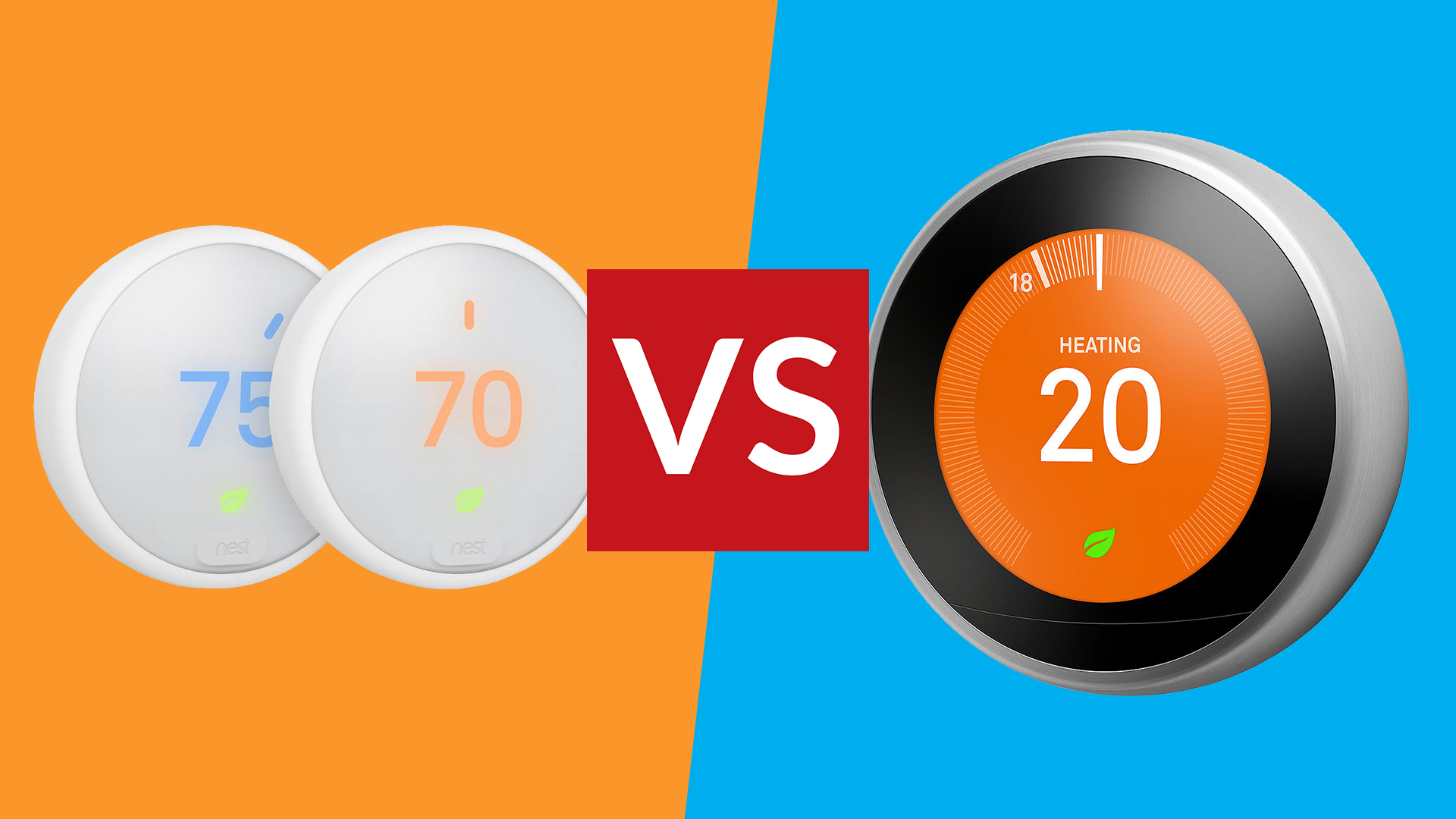
With the cost of living crisis crushing people's budgets, getting a massive grip on your energy usage is now a top priority, and the best way to do that is by investing in one of the best smart thermostats on the market.
And, if you're shopping for a smart thermostat two of the models you should consider are made by Nest, the Nest Thermostat E and Nest 3rd Gen. Nest's products should absolutely be on your shopping list, but is it worth going with the cheaper model or the more premium one? That's what this feature is designed to help you decide.
Two circular units with colour displays, the Nest 3rd Gen and the Nest Thermostat E look pretty similar. When you get up close, though, the differences start to show themselves.
Both control your heating and claim to learn your routines so they’ll turn the heating off when you go out to work, yet have the house warm again by the time you get back. They also tie into certain digital assistants, so you can ask Alexa or Google Assistant to turn the heating up when you’re feeling chilly, or to turn it off when you go out for an impromptu walk.
We'll dig into everything you need to know so you can decide whether the cheaper E will work for you, or whether you need to go full-fat.
Nest Thermostat E vs Nest 3rd Generation: Price & design
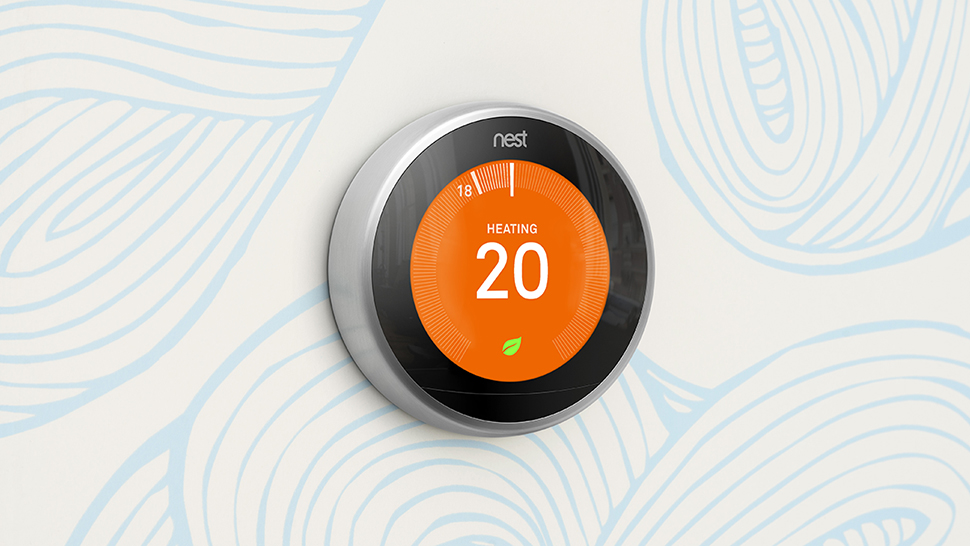
The Nest 3rd Gen has a metal exterior, and more detailed screen.
When it comes to up-front pricing, one model is clearly a more value-oriented proposition than the other. The Nest 3rd Generation Thermostat (known in the US as the Nest Learning Thermostat) is £219/$249, while the Nest Thermostat E (known in the US as the Nest Thermostat) is £199/$129.
Note that the E comes with a built-in stand so that it doesn't need to be wall mounted, while for the 3rd Gen model it’s an optional extra for £35 but doesn’t seem to be available in the US, at least on the Google Store.
Sign up to the T3 newsletter for smarter living straight to your inbox
Get all the latest news, reviews, deals and buying guides on gorgeous tech, home and active products from the T3 experts
Both models claim to lower your heating bills by 10-12%, and take 15% off your cooling bills – basically, in terms of the effect on your energy use they're the same, and the differences between them are all to do with features and compatibility.
Both thermostats are circular, and display the set temperature in an easy to read font. The Thermostat E’s default look of white against light grey may be a touch hard to read, but it can be changed to a warm orange.
In the UK the E is only available in a white plastic finish, which Google claims mimics ceramic, while in the US it’s available in four colours: white, pale orange, grey and almost white (that’s Snow, Sand, Charcoal and Fog in Google speak). The display is frosted, so you’re always looking at a white (snow?) background. You twist the ring that surrounds the display to adjust the temperature, and it does the rest.
The 3rd Generation Thermostat is slightly different, in that it has a metal ring around the outside. Again, US customers get more colours: polished steel, mirror black, brass (metallic yellow), stainless steel, white, black (more like charcoal) and copper (metallic orange). UK customers have to make do with white, black or grey. The 3rd Gen model also has a sharper display, as it’s higher resolution than the E model and isn’t frosted. It will also show you the time, or a weather report.
Nest Thermostat E vs Nest 3rd Generation: Compatibility
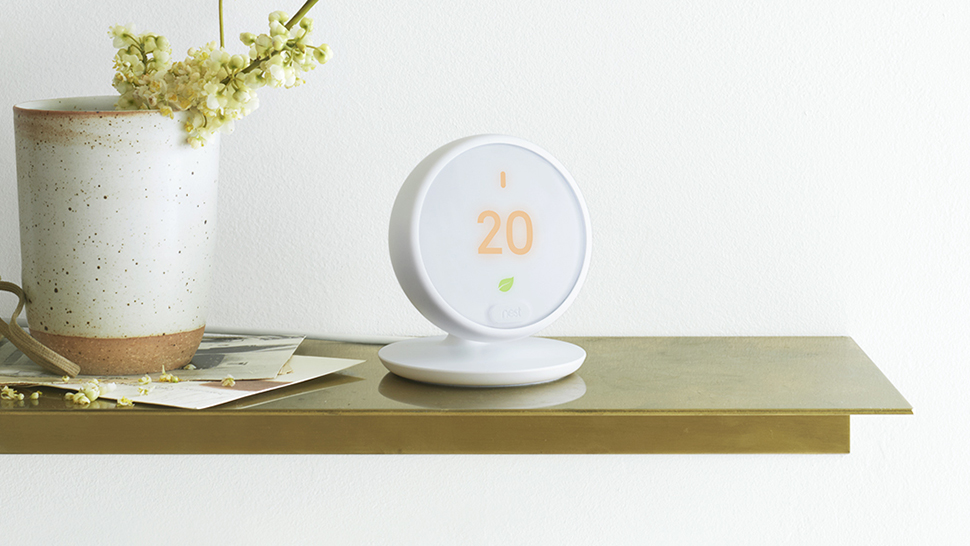
The Nest Thermostat E comes with a stand, so you can have it wall mounted to placed on a shelf.
There’s a compatibility checker on the Nest website that asks a few questions about the heating system in your home, and pronounces whether Nest is compatible depending on your answers.
The 3rd Gen model works with most central heating systems, and will control your hot water too, while the E model is heating only. If you run a 24v heating and cooling system, Google claims the E is compatible with 85% of them – depending on the availability of C wires and other power features – while the 3rd Gen is compatible with 95%. The power requirement is why Google recommends the 3rd Gen is installed by a professional, while the E is easy to install yourself.
If you have your own gas, oil or electric boiler, with its own thermostat (wired or wireless) but without a separate hot water tank, then you’re compatible with either model. Heat pumps or biomass systems are compatible as long as they have a dedicated thermostat.
Where it gets complicated is if you have a district or communal heating source, or anything without a separate thermostat device – Nest can’t work without one of these. You can add a separate temperature sensor that connects to either model, if you want to monitor heating changes in a particular area away from the thermostat.
Nest Thermostat E vs Nest 3rd Generation: Features & app
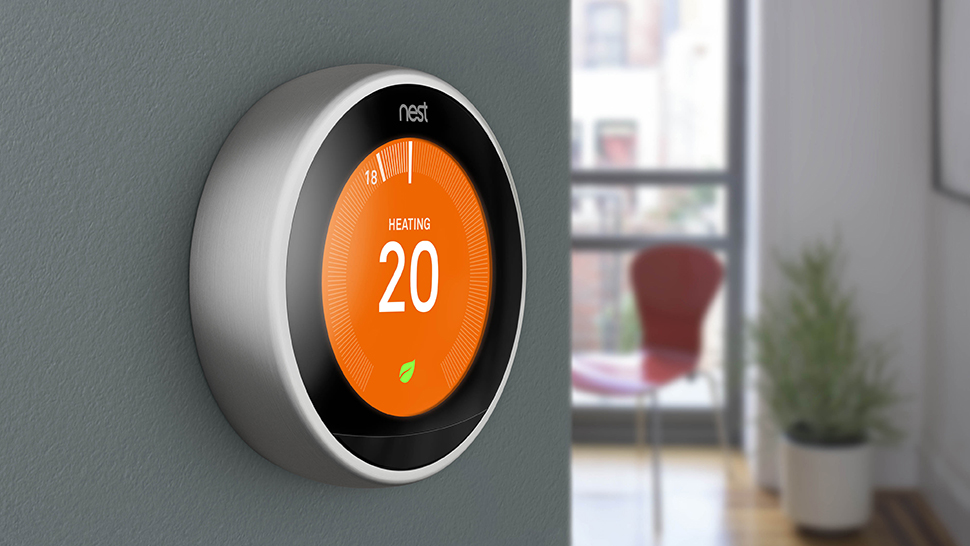
The Nest 3rd Gen can control both heating and hot water – the Nest E only controls heating.
The Nest Thermostat E is powered by your heating system, but has two AAA batteries to act as a backup. The 3rd Gen contains a rechargeable lithium battery, which will charge itself continuously if wired on the wall.
The Google Home app is used to control both devices, and to set up the E model, but the 3rd Gen needs the Nest app for setup. They’re both freely available from the Play Store or Apple App Store, and the setup process is a guided one. Only in the 3rd Gen can you do it completely manually.
The Nest thermostats respond to Google Home voice control, and there’s an Alexa Skill for them too, but they aren’t compatible with Apple’s HomeKit, so you won’t be able to control them with Siri or use HomeKit automations.
Nest Thermostat E vs Nest 3rd Generation: Verdict

If you’ve got your eye on a Nest thermostat, the two models available can look very similar, and indeed they are. The Nest E is the cheapest and simplest, and its plastic finish can look very good. It’s also portable, so you can move it around the house with you, and decide on the best place to put it.
The Nest Thermostat 3rd Gen, by contrast, is a wall-mounted device installed by a professional. Its metal exterior looks classy, and its high-res screen is sharp and displays more information than that on the E.
They both offer close to the same functionality – with the significant difference being the 3rd Gen’s ability to control hot water as well as heating – so beyond that the choice comes down to how much you want to pay, and whether you want to have it professionally installed, or do it yourself.
-
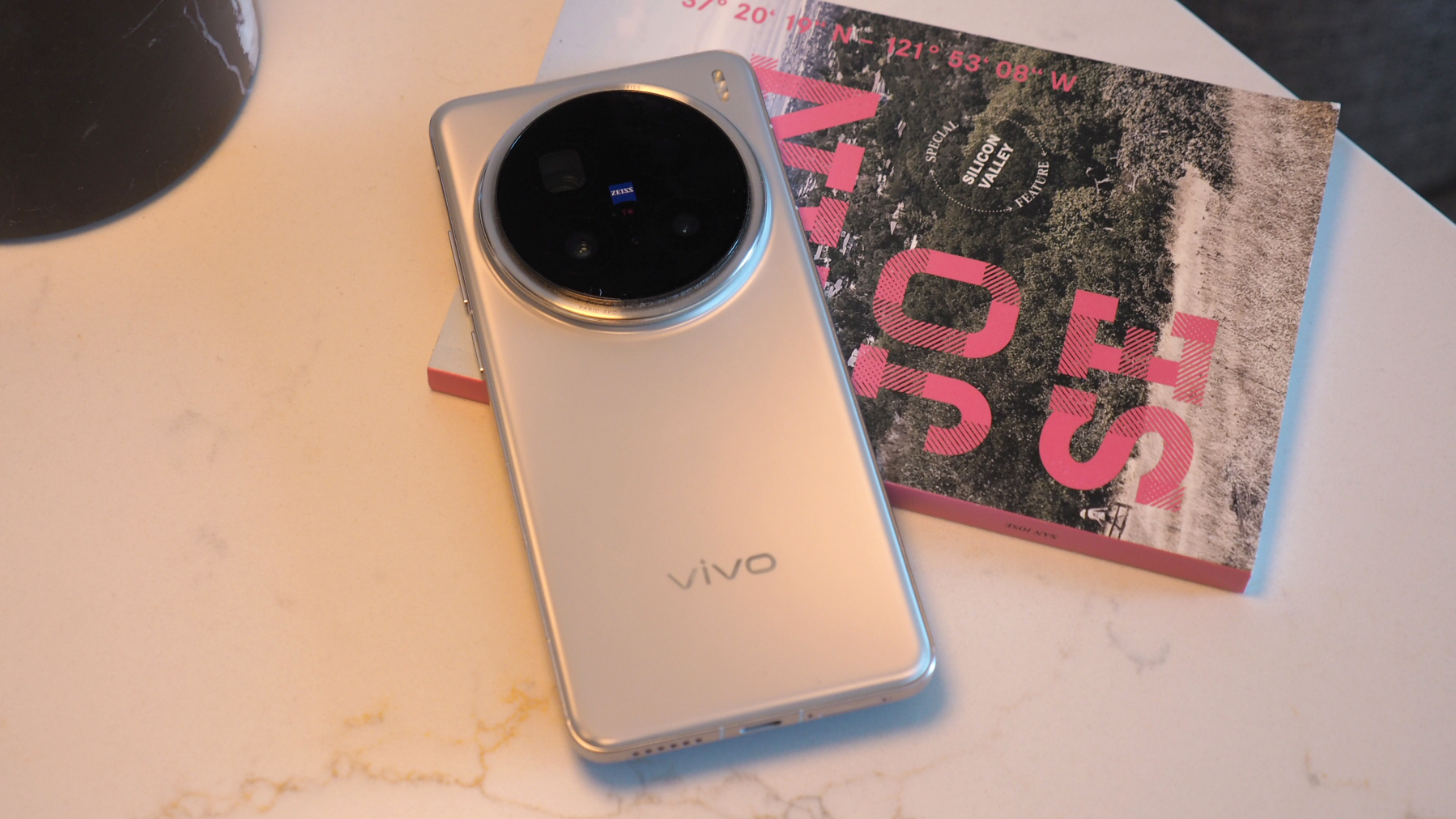 Android phones just got surprise prospective upgrade from MediaTek
Android phones just got surprise prospective upgrade from MediaTekDimensity 9400+ anyone? MediaTek's powerhouse chip just ranked up
By Mike Lowe Published
-
 This Disney Plus favourite had 100% on Rotten Tomatoes last season – here's when the new one is out
This Disney Plus favourite had 100% on Rotten Tomatoes last season – here's when the new one is outIt's an Emmy award-winning show
By Sam Cross Published